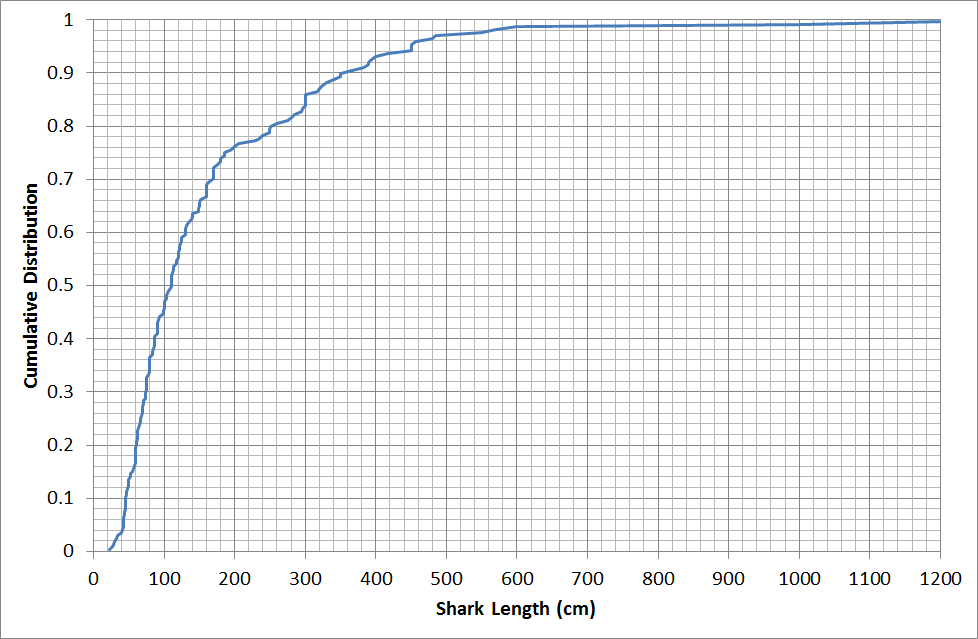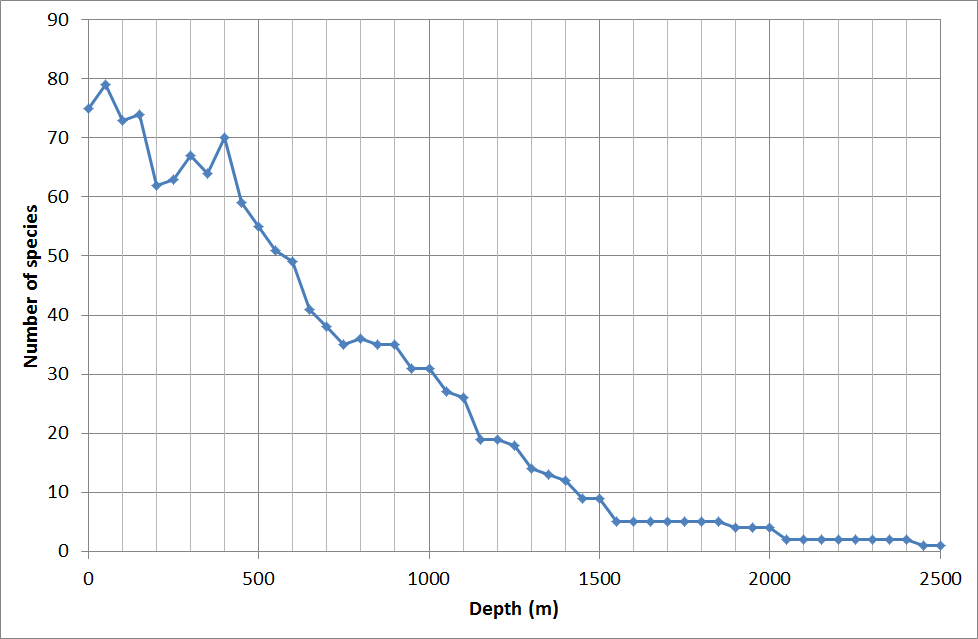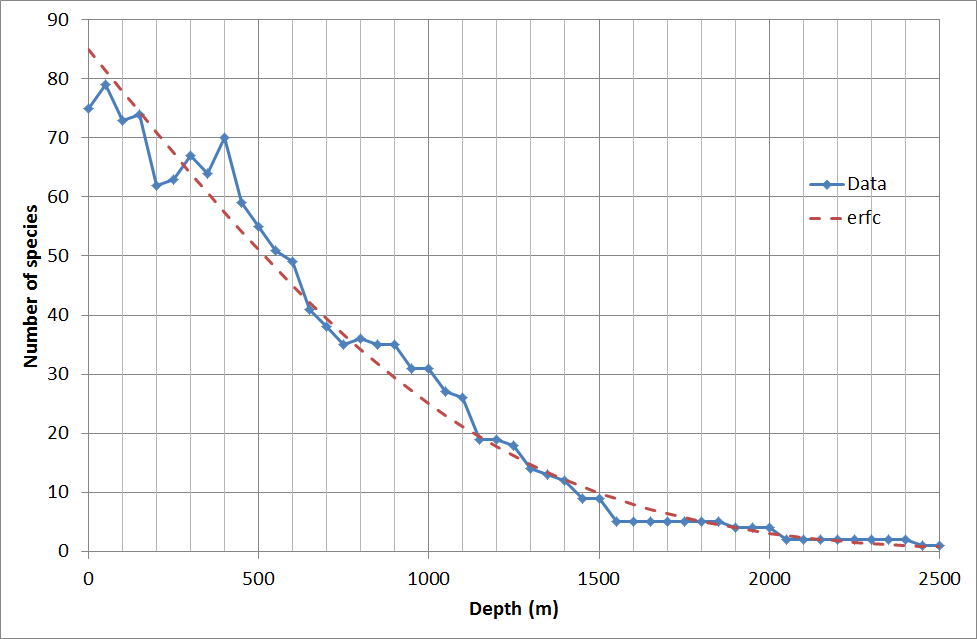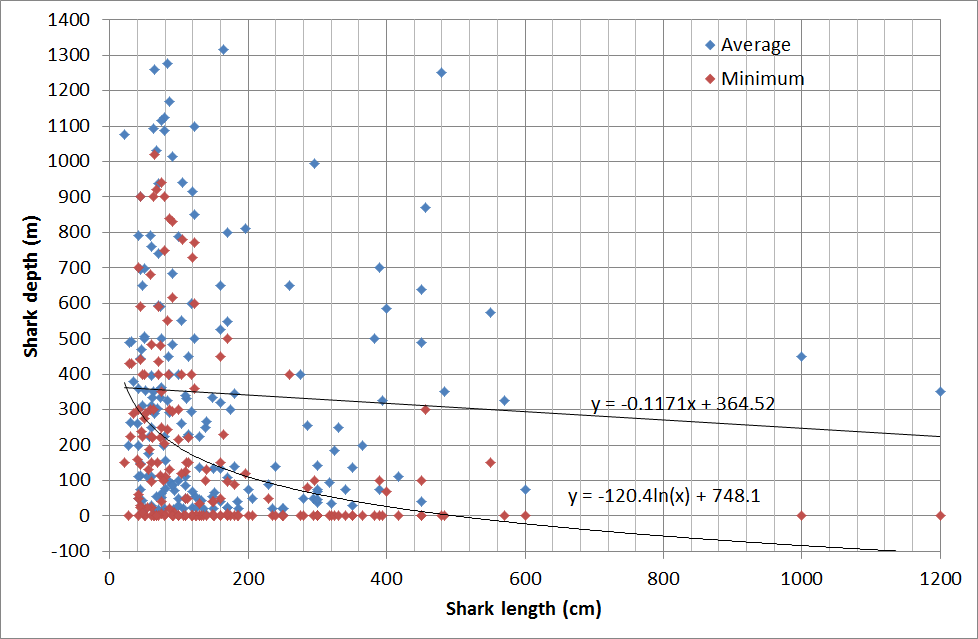Reading “Sharks and Rays of Australia” book again, Last time, I was extremely impressed by how many new shark species have been found. This time, I thought I’d check out shark lengths and the depth that they live. Results from Excel spreadsheet.
The median upper length for shark species (excluding rays and chimeras) is only 1.1 metres, largely because of the large numbers of small dogfish and catshark species.
The number of shark species found at a depth of 700 m, which is really deep, is still 50% of the number of shark species found in surface waters.









